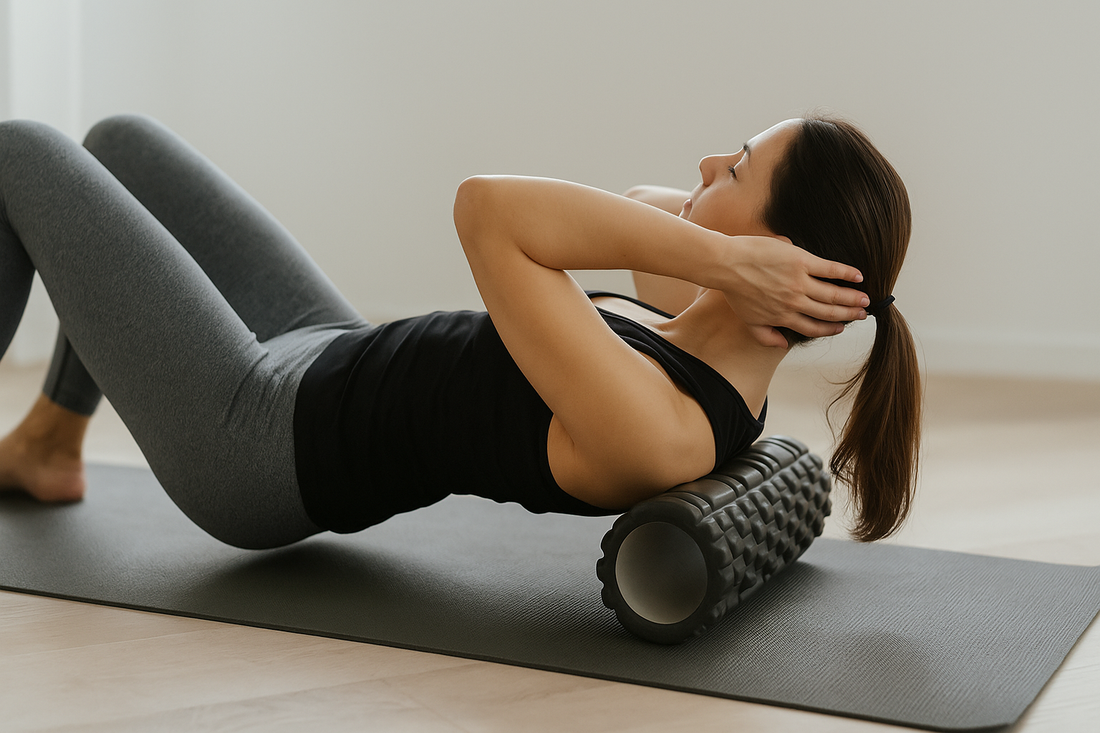
Foam Roller Benefits for Muscle Health
In the world of fitness and recovery, the foam roller has evolved from a niche tool to an essential part of every athlete’s wellness routine. Whether you’re training for performance or simply want to ease post-workout soreness, foam rolling can make a major difference in your muscle health, flexibility, and recovery.
Let’s explore how this simple yet powerful accessory supports your muscles — and how to use it effectively for long-term results.
1. Understanding Foam Rolling and Myofascial Release
Foam rolling is more than a trend; it’s a form of self-myofascial release (SMR) — a technique designed to relieve tightness in the muscles and connective tissue (fascia).
When performed correctly, it helps break down knots, improve circulation, and restore mobility.
• Improved Blood Flow: Rolling increases oxygen delivery to muscles, speeding up recovery.
• Reduced Muscle Stiffness: Regular use prevents chronic tension and stiffness in key areas like the back, legs, and shoulders.
• Better Range of Motion: A few minutes of foam rolling before and after workouts can enhance flexibility and prevent injury.
To begin, explore the Foam Rollers & Massage Balls collection — each tool is designed for precise muscle targeting and effective tension release.
2. Key Benefits for Muscle Health
The real power of foam rolling lies in its ability to support recovery and performance at the same time.
Here are the core ways it benefits your muscles:
• Relieves Soreness: Reduces delayed-onset muscle soreness (DOMS) after intense training.
• Enhances Recovery: Helps flush out lactic acid buildup, minimizing fatigue.
• Supports Circulation: Promotes blood flow and lymphatic drainage for faster healing.
• Prevents Overuse Injuries: Keeps muscles pliable, reducing risk of strains.
Pairing your roller with other tools like Massage Guns & Attachments can further enhance deep tissue recovery and speed up relaxation after workouts.
3. When and How to Use Foam Rollers Effectively
Using a foam roller at the right time can dramatically improve your results.
Here’s how to make the most of your sessions:
• Pre-Workout: Roll lightly for 5 minutes to warm up muscles and improve blood flow.
• Post-Workout: Focus on sore or tight areas for 10–15 minutes to accelerate recovery.
• Daily Routine: Even on rest days, short rolling sessions improve long-term flexibility.
After each session, soothe your muscles with Ice Packs & Heat Therapy Pads to calm inflammation and relax tissue tension.
Finish your cool-down with a Fitness Towel (Quick-Dry) — ideal for post-roll freshness and hygiene.
4. Common Mistakes to Avoid
Even though foam rolling is simple, poor technique can lead to discomfort or reduced effectiveness.
Here are a few expert reminders:
• Don’t rush — move slowly over each muscle group.
• Avoid rolling directly over joints or bones.
• Don’t press too hard on sore muscles; consistency matters more than intensity.
• Combine foam rolling with proper stretching for best results.
Remember: foam rolling isn’t about pain tolerance — it’s about releasing tension safely and progressively.
5. Expert FAQs: Foam Rolling & Recovery
Q1. How often should I use a foam roller?
Most people benefit from rolling 4–6 times per week for 10–20 minutes. Adjust frequency based on soreness and activity level.
Q2. Can foam rolling replace stretching?
Not entirely — foam rolling prepares muscles for movement, while stretching improves flexibility. Use both for optimal results.
Q3. What if I feel pain during foam rolling?
Mild discomfort is normal, but sharp pain means you’re applying too much pressure. Reduce intensity and avoid sensitive areas.
Q4. Should beginners use softer rollers?
Yes. Start with a medium-density roller before progressing to firmer types for deeper pressure.
💪 Conclusion: Make Recovery a Priority
Muscle health isn’t just about lifting weights — it’s about caring for your body after the workout ends.
Foam rolling encourages balance, mobility, and resilience, helping you perform better and recover faster.
Make it a part of your daily wellness ritual with PrimeVita’s curated recovery tools.
🏷️ Recommended PrimeVita Collections ↗
• Foam Rollers & Massage Balls


